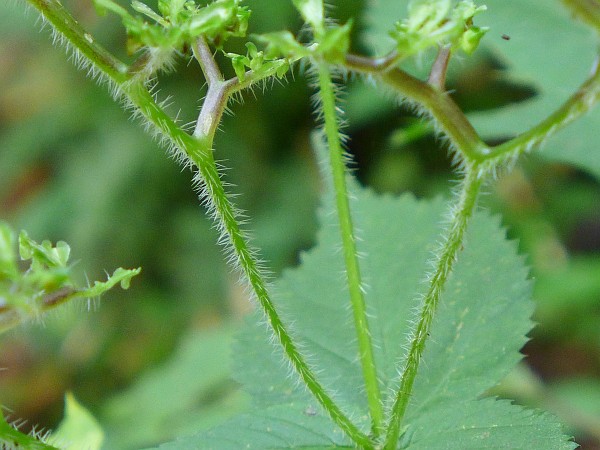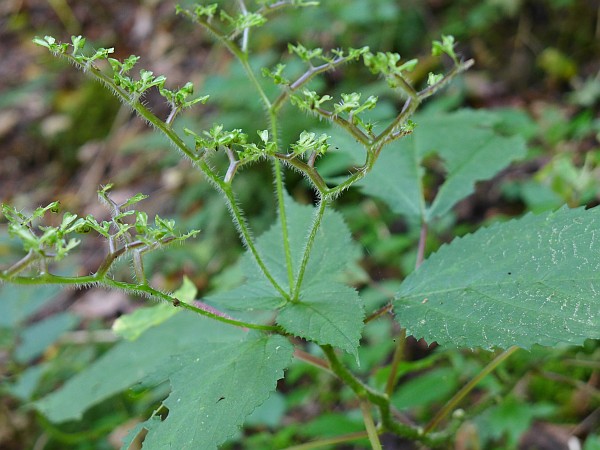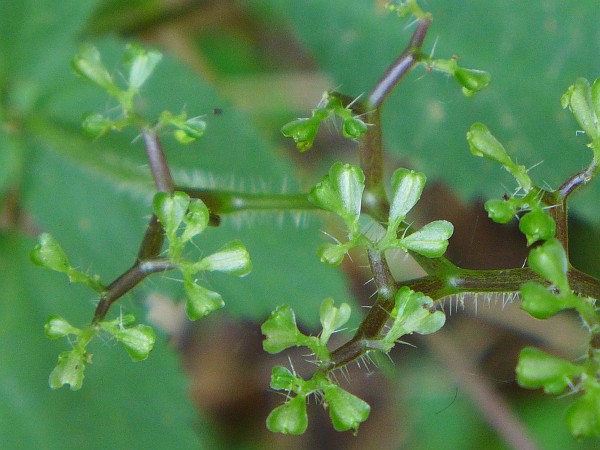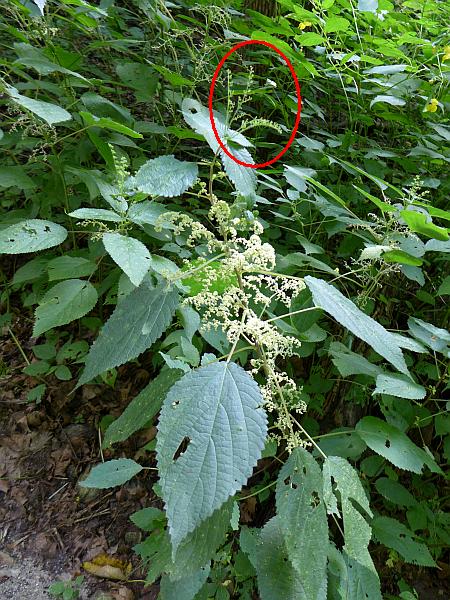
17 September 2014
Stinging nettle captured my imagination at the age of seven.
In Now We Are Six, Christopher Robin offers the Little Black Hen three things if she’ll lay him an egg for Easter Day. Of the three, the only thing she cares to see is the nettle-place on his leg which she touches gently with her wing. “Nettles don’t hurt if you count to ten.” This left a lasting impression on me.
For decades I thought nettles were foreign, exotic and only grew in England so I was awed when shown a huge patch in Pennsylvania. It was spring. The patch smelled like cat pee. I kept a wide berth and vowed to always wear long pants while hiking (which I do to this day).
The nettle Christopher Robin encountered was Urtica dioica. Originally native to Europe, Asia, and northern Africa it was introduced here plus we have a similar native — wood nettle (Laportea canadensis).
Both species are one to six feet tall and coated with hollow stinging hairs loaded with histamines and painful chemicals. A gentle brush against the plant causes the hairs to detach and become needles in your skin. The sting is memorable. For those desperate to hold the plant a firm grasp flattens the hairs so that fewer penetrate. This is counter-intuitive and not for the faint of heart.
At very close quarters nettles look bristly. The close-up above is of the crown at the top of wood nettle.

Even the tiny leaf-like structures have stinging hairs.

Because of my cautionary introduction to nettles, it took me a long time to believe the plant is good to eat and has a wide variety of medicinal uses. I was skeptical about the Nettle Soup recipe in my Joy of Cooking cookbook. “Using rubber gloves to protect you from the stinging nettles, remove the central stem from 1 Quart young nettle tops.” (Sure! I’m going to eat that??) But it’s true. Nettles are eaten around the world. Young leaves are best. Click these links for food and medicinal uses.
Some people take nettle eating to an extreme. There’s an annual World Nettle Eating Championship in Dorset England which began on a dare in 1986. Beer is involved.
In September stinging nettles still have a frizz of whitish flowers dangling from their stems — or perhaps seeds, I did not get close! — as seen in the whole-plant photo below. I’ve circled the crown area of the close-ups in red.

So now you know what it looks like … in case you want to try. 😉
(photos by Kate St. John)
I think Laborers canadensis has it’s own beauty. I didn’t know it was edible.
I had heard that Utica spp. were edible.
Very nice feature. I really enjoy reading them.
Mark